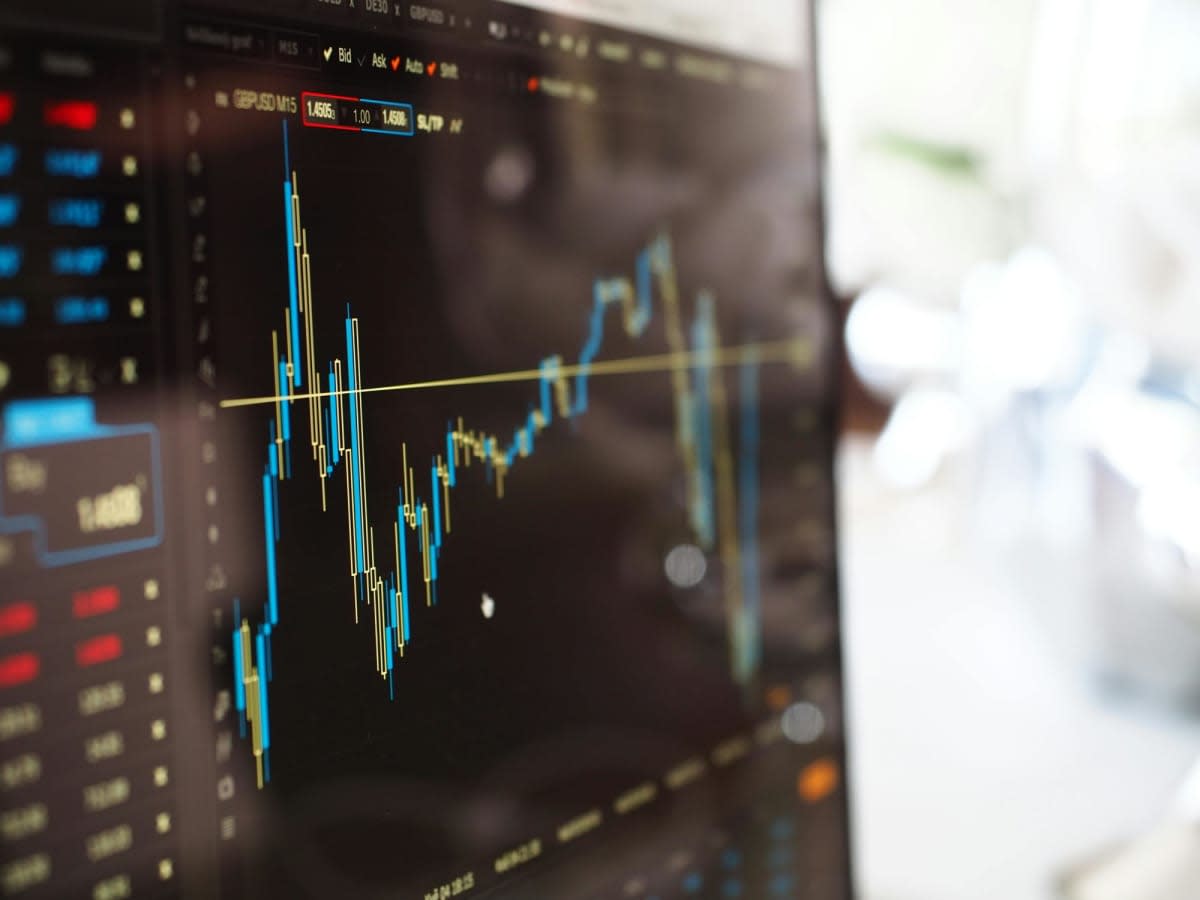Invest
What is a gamma squeeze?
You may have read the term “gamma squeeze” being used frequently over the past few weeks, especially with the significant upward movement seen in shares such as GameStop. Read on to learn how this sharemarket phenomenon happens. Read on to learn how this sharemarket phenomenon happens.
What is a gamma squeeze?
You may have read the term “gamma squeeze” being used frequently over the past few weeks, especially with the significant upward movement seen in shares such as GameStop. Read on to learn how this sharemarket phenomenon happens. Read on to learn how this sharemarket phenomenon happens.

The phrase, barely seen in stock trading over the last few years, has become a term frequently scattered across both traditional and social media.
In a gamma squeeze, the price of a stock transiently increases based on an investor buying many options to drive up the prices of select stocks due to option sellers needing to hedge their trades on the underlying stocks.
But how does it work?
How does a gamma squeeze happen?

When an investor buys a stock option, there’s a good chance that a market maker sold it. A market maker does what their name indicates – they create markets by selling options to people who want to buy options, and they buy options from people who want to sell them. They profit from the difference between the bid and the asking price or the spread.
Now if a stock has several traders buying call options, because there is speculation or prediction from market analysts that the stock is going to rally, market makers will take action to hedge their risks.
In other words, they will take action to prevent them from selling naked options (options sold without any previously set-aside shares or cash to fulfill the option obligation at expiration). These options run the risk of large loss from rapid price change before expiration.
This is where the squeeze begins.
Market makers will buy shares of the stock in order to protect themselves from a potentially massive loss. In other words, they will buy the underlying stock so that they have net exposure.
How many shares do they buy?
Now we’re speaking Greek.
Market makers base the volume of the shares they buy on the “delta” of the option they have sold. Delta is the rate of exchange of options price per the change in the underlying stock price. For example, a delta of 0.75 means that if the underlying stock’s price climbs by $1 per share, the option on it will also increase by $0.75. Delta is a linear function, meaning it will not change proportionately with a stock price.
The higher the delta is, the more shares a market maker will need to buy to hedge their positions.
Meanwhile, gamma refers to the rate of the change of the delta. Simply put, the closer to the money the option is, the higher the gamma rate.
Picture this scenario.
A market maker sells four out-of-the-money (OTM) calls to a retail trader. An OTM is when the call option’s strike price is higher than the current market price of the underlying stock. They buy shares based on the delta of that option to minimise their risk. A stock option that has a prevalent price point might have a delta of 0.75, while the far OTM options might have a delta of 0.50. The option purchases force the dealers to buy the underlying stock, which can push the share price higher.
And now a loop is created. As the stock rises higher to the money, the market maker needs to buy more shares to ensure that they offset their risk or they are net flat. As mentioned, brokers and dealers are motivated by commissions and will not want to hold a trade either long or short. This causes the stock to continue rising, which is known as the gamma squeeze.
Gamma squeezes can be significantly influential to the sharemarket when investors are buying a high volume of OTM contracts. If the stock continues to increase towards the strike price, that is when the delta acceleration (measured through gamma) is the strongest.
Another similar phenomenon to the gamma squeeze is a short squeeze. In this scenario, short sellers frantically buy shares to close out their positions. The buying frenzy pushes the price higher, which can cause other shorts to bail on their positions, establishing a cycle of intense buying pressure.
Conclusion
Investors who wish to personally manage their share portfolio will encounter various sharemarket metrics that can guide them in determining how a company’s share price could move. To learn more about concepts such as short floats.

Stock market
6K Additive secures A$48 million through initial public offering on the Australian Stock Exchange
6K Additive, a prominent player in the advanced metal powders and alloy additions market, has made a significant stride by successfully completing its Initial Public Offering (IPO) on the Australian ...Read more

Stock market
Institutional investors increase stock allocations to 18-year high amid cautious market shifts
In a recent development, State Street Markets unveiled the findings of its latest State Street Institutional Investor Indicators, revealing intriguing shifts in institutional investor behaviourRead more

Stock market
FOREX.com launches in Australia to empower self-directed traders
StoneX Group Inc. (NASDAQ: SNEX) has announced the Australian launch of FOREX.com, expanding access for self-directed traders to a global suite of Contracts for Difference (CFD) products across ...Read more

Stock market
Westpac and CMC Markets strengthen partnership to enhance online trading services
In a significant move that underscores the evolving landscape of online trading in Australia, CMC Markets Stockbroking has been chosen as the preferred vendor by Westpac Banking Corporation to extend ...Read more

Stock market
Portfolio reviews as an operating discipline: turning volatility into a competitive edge
In a higher-rate, higher-volatility world, portfolio reviews are no longer an annual hygiene task; they’re a core operating rhythm that protects cash flow, unlocks tax alpha, and sharpens risk ...Read more

Stock market
Fee war on the ASX: Global X’s A300 turns up the heat on core Aussie equity ETFs
Global X has lobbed a 0.04% management fee into Australia’s core equity sandbox, launching the Australia 300 ETF (A300) to take on entrenched giants. Read more

Stock market
Challenger IM shakes up the ASX with private credit note and a side of risk
Challenger Investment Management has taken private credit mainstream with an ASX-listed note structure—LiFTs—that secured roughly $100 million in cornerstone commitments within a day of launch. Read more

Stock market
International stocks: Diversifying your portfolio beyond Australia
In an increasingly globalized market, Australian investors have the opportunity to enhance their investment portfolio by incorporating international stocks. Diversifying your investments globally can ...Read more

Stock market
6K Additive secures A$48 million through initial public offering on the Australian Stock Exchange
6K Additive, a prominent player in the advanced metal powders and alloy additions market, has made a significant stride by successfully completing its Initial Public Offering (IPO) on the Australian ...Read more

Stock market
Institutional investors increase stock allocations to 18-year high amid cautious market shifts
In a recent development, State Street Markets unveiled the findings of its latest State Street Institutional Investor Indicators, revealing intriguing shifts in institutional investor behaviourRead more

Stock market
FOREX.com launches in Australia to empower self-directed traders
StoneX Group Inc. (NASDAQ: SNEX) has announced the Australian launch of FOREX.com, expanding access for self-directed traders to a global suite of Contracts for Difference (CFD) products across ...Read more

Stock market
Westpac and CMC Markets strengthen partnership to enhance online trading services
In a significant move that underscores the evolving landscape of online trading in Australia, CMC Markets Stockbroking has been chosen as the preferred vendor by Westpac Banking Corporation to extend ...Read more

Stock market
Portfolio reviews as an operating discipline: turning volatility into a competitive edge
In a higher-rate, higher-volatility world, portfolio reviews are no longer an annual hygiene task; they’re a core operating rhythm that protects cash flow, unlocks tax alpha, and sharpens risk ...Read more

Stock market
Fee war on the ASX: Global X’s A300 turns up the heat on core Aussie equity ETFs
Global X has lobbed a 0.04% management fee into Australia’s core equity sandbox, launching the Australia 300 ETF (A300) to take on entrenched giants. Read more

Stock market
Challenger IM shakes up the ASX with private credit note and a side of risk
Challenger Investment Management has taken private credit mainstream with an ASX-listed note structure—LiFTs—that secured roughly $100 million in cornerstone commitments within a day of launch. Read more

Stock market
International stocks: Diversifying your portfolio beyond Australia
In an increasingly globalized market, Australian investors have the opportunity to enhance their investment portfolio by incorporating international stocks. Diversifying your investments globally can ...Read more








